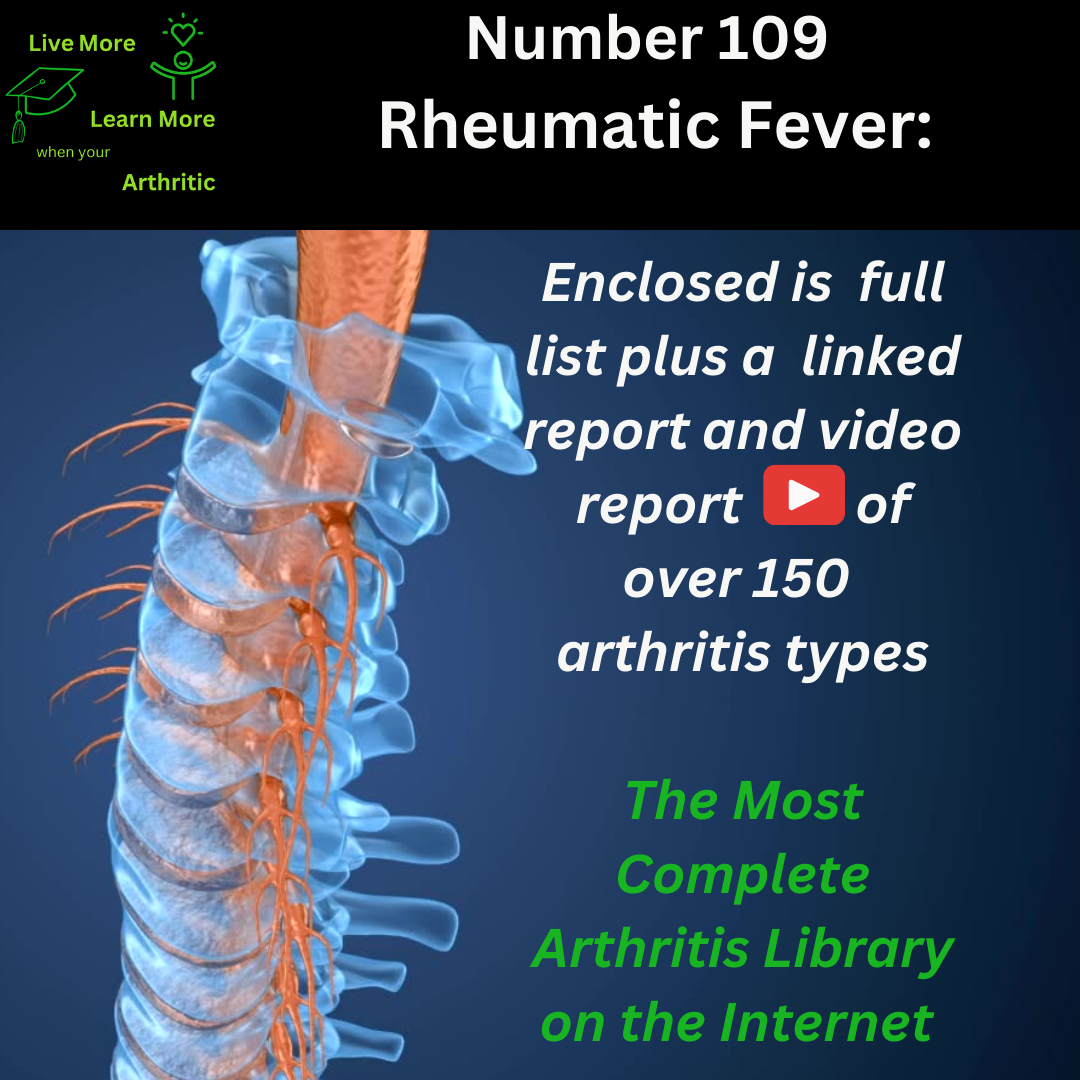
Rheumatic Fever: Number 109 of around 150 types of Arthritis
Understanding Rheumatic Fever
Rheumatic fever is a complex illness that primarily affects the heart, joints, brain, and skin. It is a result of an autoimmune response triggered by a previous streptococcal infection, such as strep throat. This condition typically manifests in children aged 5 to 15 years and can have serious implications if left untreated.
 Most Affected Areas and Symptoms
Most Affected Areas and Symptoms
Heart Involvement
The heart is the most critical area affected by rheumatic fever. The disease can cause inflammation of the heart’s valves (known as rheumatic valvulitis), leading to damage that affects blood flow and heart function. Symptoms may include chest pain, shortness of breath, and palpitations.
Joint Pain and Inflammation
Rheumatic fever often presents with migratory arthritis, where joints become swollen, red, and painful. This arthritis tends to move from one joint to another over several days and can limit movement due to pain and inflammation.
Skin Manifestations
Skin involvement in rheumatic fever can result in painless nodules under the skin (subcutaneous nodules) and a characteristic rash called erythema marginatum.
Remission and Lifespan Impact
While some patients experience remission from acute symptoms, the damage caused to the heart valves can be permanent. The extent of damage and its impact on lifespan can vary significantly among individuals. Early diagnosis and appropriate treatment can improve outcomes and quality of life.
Autoimmune Nature and Risk Factors
Rheumatic fever is considered an autoimmune disease triggered by a bacterial infection. Individuals with a genetic predisposition and exposure to streptococcal infections are at higher risk. Poor socioeconomic conditions and overcrowded environments also contribute to its prevalence.
Complications and Range of Motion
Swelling and inflammation are significant factors in joint pain and limited range of motion. Inflammation affects the synovial lining of joints, leading to pain and stiffness. Over time, untreated inflammation can damage cartilage, further restricting movement.
Quality of Life and Proactive Approach
A proactive approach involving early diagnosis, treatment of streptococcal infections, and long-term management of symptoms can significantly improve quality of life for those with rheumatic fever. Regular follow-ups with healthcare providers, adherence to medication regimens, and lifestyle modifications (like regular exercise) are essential components of managing this condition.
Possible Complications and Demographics
Complications
- Rheumatic Heart Disease: Chronic damage to heart valves
- Heart Failure: Impaired heart function due to valve damage
- Neurological Effects: Inflammation affecting the brain (Sydenham chorea)
- Endocarditis: Infection of heart valves
Age and Gender
Rheumatic fever commonly affects children between 5 to 15 years, with a slight predominance in girls. However, complications can persist into adulthood if the heart valves are damaged.
Patients with rheumatic fever should be aware of related conditions such as infective endocarditis, aortic valve disease, and heart failure. These conditions can exacerbate symptoms and require tailored management approaches.
In summary, while rheumatic fever poses significant challenges, proactive management and early intervention can mitigate its impact and enhance overall quality of life. Understanding its complexities and potential complications is crucial for effective treatment and long-term well-being.

